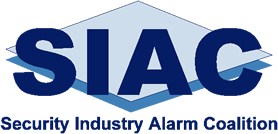There are many phrases and acronyms used when it comes to alarm management issues. Some are more recent, some have been around for 15 years or more. Because we use many of these terms or acronyms on a fairly regular basis, SIAC thought it worthwhile to publish a list this week for those who are less-than-familiar with some of the more important terminology we use.
KEY ACRONYMS and TERMS
AHJ Authority Having Jurisdiction (most typically referring to local authorities and most often Fire)
AIREF Alarm Industry Research and Education Foundation (a non-profit foundation)
ANSI American National Standards Institute (an independent standards approval authority)
APCO Association of Police Communication Officers (9-1-1 officials)
B and F Broadcast ad File is a police policy where the police are not dispatched to alarm calls but all calls are broadcast and the individual patrol officers determine whether to respond.
CANASA Canadian Security Association (represents all facets of alarm industry in Canada)
CARE Coordinated Alarm Reduction Effort (sponsored law enforcement Summits (1998-2002)
CP-01 ANSI/ SIA CP-01 Control Panel Standard, the first ever alarm panel designed to address the alarm user interface issue and high incidence of user initiated false dispatches.
CSAA Central Station Alarm Association (primarily represents monitoring companies)
ECV Enhanced Call Verification (2-calls) an ANSI/ CSAA CS-V-01-2004 monitoring standard
ESA Electronic Security Association (Formerly NBFAA and primarily represents installing companies)
FARA False Alarm Reduction Association (an association made up of law enforcement managers)
FM Factory Mutual (an independent listing and testing authority NRTL)
IACP International Association of Chief’s of Police (represents law enforcement officials globally)
IQ Installation Quality Certification Dealer Program – Implementing best practices to reduce alarm dispatches.
NRTL Nationally Recognized Testing Laboratory (independent testing & listing authorities such as FM)
NSA National Sheriffs Association (represents non police chiefs, primarily Sheriffs)
NTS National Training School (sponsored by ESA to provide approved industry training)
PSAP Public Sector Answering Point (9-1-1 centers)
PSLC Private Sector Liaison Committee of the IACP (committee of IACP interfaces with private sector)
SACOP State Association of Chiefs of Police (state chapters of the IACP)
SIA Security Industry Association (primarily represents alarm industry manufacturing interests)
SISC Security Industry Standards Committee (Multi-Association Committee to oversee all industry standards development.)
UL Underwriters Laboratories (an independent listing and testing authority NRTL)
VR Verified Response is a process by which police will not respond to intrusion alarms unless it is first independently verified by a citizen or guard.
For these terms and more, visit SIAC’s Web site at: http://siacinc.org/Training.aspx.
Model Alarm Ordinance
A living document developed jointly by the industry and law enforcement. This is a frame work ordinance where all issues have been fully vetted so that interested parties can use the model to develop a local alarm ordinance
Best Practices A series of recommendations on what should be included in a local alarm ordinance to insure success. The Best Practices are in the Model Ordinance.
Model Cities A program requested by the PSLC of IACP to investigate false dispatches, their cause and cure.
Model States An 18 month, in depth study of solutions to the dispatch problem. This study was conducted in Florida, California, Illinois and Washington State. See the Model States Report available at http://www.siacinc.org/.
